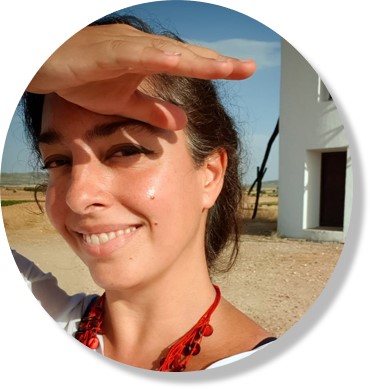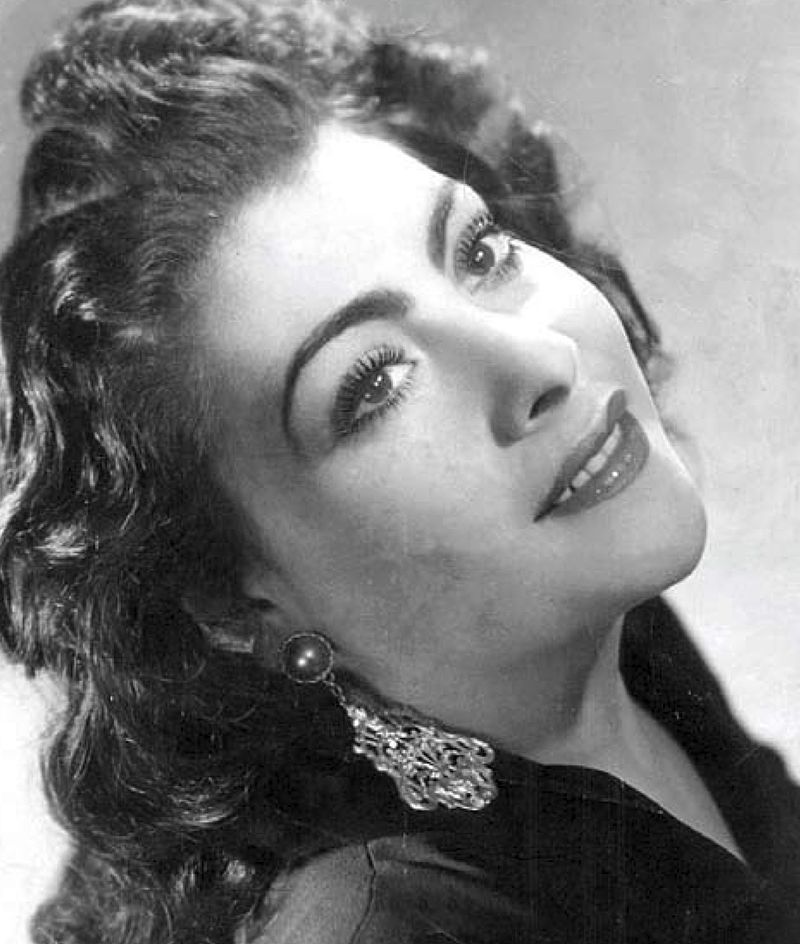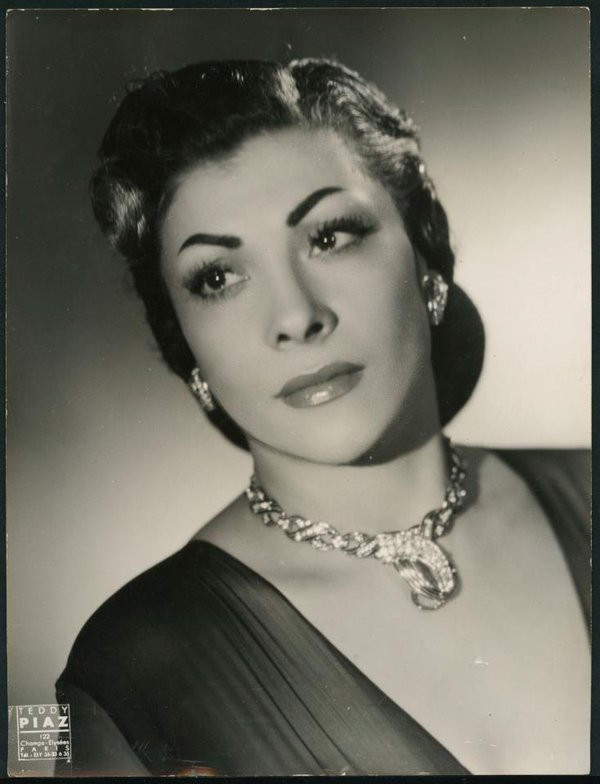Shabbat is almost here
And today we will enjoy with the Algerian diva Line Monty.
 Hello. I hope you are well. You did not receive my email last week. Sorry, I didn’t do it. I was in Estonia for the Viljandi folk festival and it was a complicated week with a lot of work, a cancelled flight and a last minute change.
Hello. I hope you are well. You did not receive my email last week. Sorry, I didn’t do it. I was in Estonia for the Viljandi folk festival and it was a complicated week with a lot of work, a cancelled flight and a last minute change.
For a few weeks I won’t leave Spain and today I come back with an edition dedicated to another Algerian Jewish artist. We have already paid attention to Algerian artists previously. Click on their names to visit their editions: Reinette L’Oranaise, Saoud L’Oranaise, Cheikh Zekri, Cheikh Zouzou, Maurice el Medioni and Salim Halali. Of all those mentioned, only Maurice El Medioni is still alive.
There are many artists of this generation who will be visiting the pages of MBS in future editions. For now, enjoy the delightful Line Monty.
Then, please, spread the word.

About Line Monty
Line Monty lived until 2003 and there is a lot of information about her. I liked Laura Elkeslassy’s vision in her text “L’Orientale | Line Monty”, which you have here and which is very brief and which I recommend to visit. Elkeslassy is a singer and you can listen to her and know more about her on her website. Elkeslassy explains that:
“Line Monty was born in Algiers in 1926 as “Éliane Serfati”—a striking last name that, in the Maghreb, means “French,” and in France, stereotypically refers to a Maghrebi Jew.”
I would like to take this opportunity to greet Mr. Serfati who is a subscriber to this newsletter! Hola! And Elkeslassy continua así:
“Monty was born into a family in love with both French and traditional Algerian music; she trained her ear on Edith Piaf, Umm Kulthum, and Mohammed Abdel Wahab.” They are all three very famous, but in case you don’t know them or if you feel like listening to them, I have linked a video with their music under each of their names.

“When she was still a young woman, Monty began performing in cabarets, and before long, she was singing in music halls across the world: Algeria, the Americas, Europe, the Middle East. While she was performing in Egypt, the legendary musician Farid El Atrache invited her to sing one of his songs, and famously, Egyptian audiences would remember her as the French woman who sings Arabic so well. Her skill with musical styles ranging from Chaabi to Francarabe, rumbas to French cabaret—combined with her warm timbre and talent for ornamentation—made her one of the great divas of her time.“ Farid El Atrache is also very famous and I am sure you have listened his “Hebeena, Hebeena”. If not, click here.
Elkeslassy includes also an interesting reflection on the artist’s identity in the way it is constructed in the piece “L’Orientale”, based on the orientalising stereotype of “dangerous sensuality, provincialism, the absence of rationality” together with the duality of Algerian origin and the “”double identification” of colonized people”. You can listen to the piece here and read the lyrics in English here.
This whole issue of stereotypes gives much food for thought. I found that Line Monty participates in an experimental film about the Spanish gypsies, called “Nous, les gitans“, from 1950, which also shows a stereotyped image of this people. The film is available here. You can see Line Monty’s participation, who is otherwise a marvel because she sings beautifully and looks gorgeous, here. It is very curious that almost 6 minutes of the 24 minutes are of her singing about a mythologised Andalusia while a man with only his genitals covered does a contemporary dance. That man is Alberto Spadolini, dancer, filmmaker and choreographer,
Thanks to my research on Line Monty I have found this film and I am watching it with a mixture of pleasure, because the art it shows is magnificent, and almost with shame because of the prototypical image it shows of these people. I imagine that in the 50s many French people would think that Spain was like that. Was it? I don’t know, I wasn’t here! Hahahahaha.
Let’s go back to Line Monty. There is a bio of her on the website of the IEMJ, with some interesting data:
- She was born in 1926 in Algiers into a music lovers family.
- Around the age of 25, she started to learn to sing with an Italian teacher and performed in public, mainly in charity galas.
- She went to Paris in the beginning of the 1950’s. In February 1952 she recorded under the name Line Monty, with the music label Pathé Marconi, several 78 RPM discs in Arab.
- The pianist Maurice El Médioni played with her throughout her Oriental career.
- Her friend, the famous musician Youssef Hagège also known as José De Suza (a Tunisian Jew) proposed one of his compositions to her, the aforementioned “L’orientale”. If you understand French, here you are a nice video about him.
- From 1953 she started to sing in French, for most of the rest of her career.
- She passed away in Paris in August 2003 and was buried in a cemetary in Pantin.
About her musical relationship with Maurice El Medioni, you can read in JeChanteMagazine, that they met in 1950 in Oran: “He was doing his military service at the time and Line, who was due to perform at a festival in Tlemcen, had not found any musicians. The reputation of Maurice, who was beginning to make a name for himself in Arab music, reached Line’s ears. She came to see him at the barracks and asked the colonel to grant him a leave… Favour refused. “Maurice, it’s a postponement“, she told him. When his military service was over, Maurice became available again and he had the opportunity to accompany Line Monty to establishments in Oran such as La Pergola or Le Coq d’Or. “When she had tasted my accompaniment, she felt that I was the element she needed“, Maurice said. But this first meeting was to have no future. The singer and her accompanist met again in Paris in early 1962.” The original text is in French.
I have selected an older recording of her but as she passed away not long ago, there are videos of her live performances, for instance, this one at her 72 years old, still very beautiful and still singing marvelously.
About the piece
According to Discogs, this piece is included in the album with the same name, Mais Qu’est Ce Que Tu Me Veux! (But what do you want from me!). In this piece she is credited as author of the lyrics and the music and the album has arrangements by Maurice El Medioni, that has been already mentioned twice above, and Meyer Bénichou (you can listen to him here).
